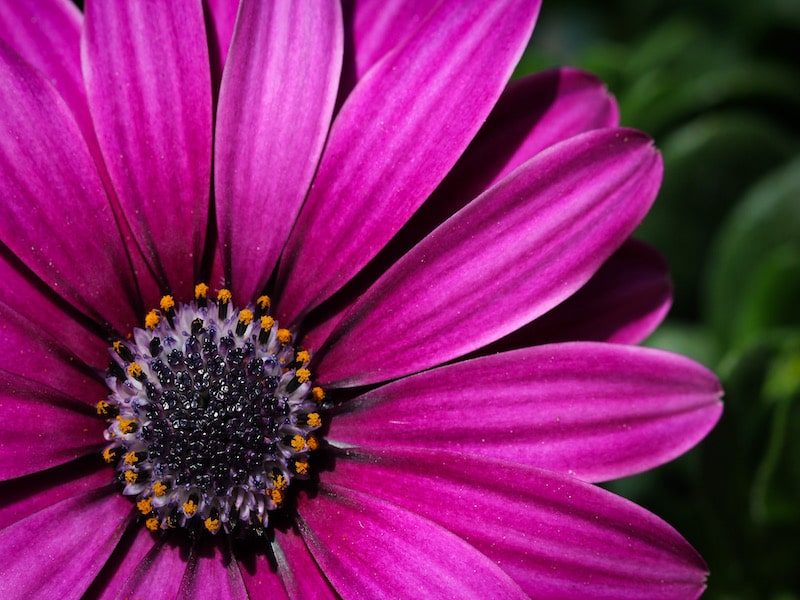
Little rain and year-round sun mean a Spanish garden looks very different from one in the UK. You’ve probably seen swathes of green sweeping across manicured grounds and tropical flowers in places like Park Guell, but Spain is also home to sun-bleached plains and dusty desert landscapes, so just what plants can survive that Mediterannean heat?
You might associate holidays to Spain with scorching sun and sumptuous sea temperatures, but it’s actually the most climatically diverse country in all of Europe. Still, with Spain’s mostly temperate weather, experiencing hot summers and milder winters, there are some plant species that thrive all over the country.
Whether you’ve got green fingers and want to spruce up your new holiday home, or you’re simply fascinated by Spain’s ecosystems, we’ve compiled just the list for you with these 9 common Spanish plants. Like a holiday in the Spanish sun will invigorate and recharge your batteries, the Mediterranean has the same effect on this native flora. Let’s get into it.
Succulents and Cacti

A symbol of subtropical lands, but also the arid landscapes of southern Spain and the typographically unique Canary Islands, succulents and cacti can be found thriving in the midday sun all over Spain. Although there are no native species of cacti in Spain, they are rife in areas of the country that are hot all year round.
Of the thousands of species of ubiquitous succulent plants, the Prickly Pear is one that is most common in Spain. Known locally as “chumbo” the cactus paddle with its edible fruit is an emblem of Andalusia, while the mountains above Orihuela are covered in Arizona cacti.
Succulents and cacti are near-impossible to kill off and can be left alone for a very long time with little care, especially in Spanish gardens. They survive cooler weather too but remember they can be vicious and could cause a few tears if grabbed by a small child. Agave, Aloe Vera, Echeveria, Euphorbia, and Sedum are all other common succulents in Spain.
Hibiscus

This genus of flowering plant, belonging to the mallow family, comprises several hundred species that are native to warm, temperate, and subtropical regions across the world. However, the colorful trumpeting flowers are pretty easy to identify, punctuating hedges, shopping streets, balconies, and even motorways all over Spain.
The trumpet-like blooms come in all ranges of colors, usually with a dark, or different colored heart of the flower. Pale pink, bright fuchsia, and striking orange hibiscus are all common throughout gardens in Spain. Hibiscus is easy to look after and flowers pretty instantly, even with little watering. Planted straight into the ground, they need even less attention.
Hibiscus tea became popular in Mexico and Central America, but it’s drunk all over Spain and other countries where the flowers are rife. The fragrant and fruity drink, usually red in color with hints of brown, is made from dried hibiscus flowers and can be drunk hot or cold. It’s thought to carry a host of health benefits as well as being instantly refreshing – ideal after a scorching day of gardening under the Spanish sun.
Cycas

They might look familiar, but cycas belong to a very ancient plant lineage called Cycadophyta, which is not closely related to palms, ferns, trees, or any other modern group of plants. Still, they’re common throughout Spain and a true wow-factor shrub. Cycas can be grown in pots and they’re often used as architectural features in courtyards or landscaped gardens in Spain, and in other subtropical and tropical parts of the world.
Cycas take a very long time to grow, but they’re still not hard to come by in the south of Spain. Despite their unique genus, cycas are still palm-like with feathery foliage and trunk cones. They’re often grown as indoor plants but they thrive much better in soil and sun. However, premium outdoor conditions are needed for cycas to survive. Temperatures below freezing will cause grave and sometimes irreversible damage to the leaves, hence why this plant is not common in Northern Spain.
Hypericum

This dense and squat ornamental plant with its showy flowers that just seem to never stop blooming has near-worldwide distribution, missing only from deserts, polar regions, and tropical lowlands. Also known as St. John’s wort, hypericum is actually used as an effective dietary supplement to treat nervous system-related disorders like anxiety, depression, and stress.
Despite its vast bioactive compounds, we wouldn’t recommend handling or consuming hypericum at your own free will, as it can be toxic, especially to dogs. Still, hundreds of other plants are in specific quantities, so you don’t need to panic if it’s growing in your garden.
Hypericum is evergreen in most winters and so it is present throughout Spain, from the mountainous north and close to the French border, right down to the sun-scorched Canaries where it handles the heat well. In cooler temperatures, it forms a bushy dome-shaped shrub that needs little care. Hypericum also does not need to be cut back or trimmed unless you want to reshape or reduce it. Do so in March if you do, this means it will flower a little later and last into the summer.
Lavender

A striking flowering plant that needs little introduction, Lavender actually belongs to the mint family, or Lamiaceae, and is native to the Old World. Lavender is found everywhere from Europe to northern and eastern Africa, the Mediterranean to Southeast Asia, and despite all of its ancient and modern uses, it’s still well-loved for its attractive appearance above all else, not to mention the distinctive fragrance of the flowers.
Lavender thrives in sunny spots but still manages to survive cooler winters in Spain. It prefers a well-drained, neutral soil, and suffers better in droughts than it does in wet weather. Lavender and its oil have been used as an antiseptic and for its anti-inflammatory properties for thousands of years, treating minor burns and bug bites and stings. But lavender oil also famously has a physically calming effect and you’ll often find it in soaps, bubble baths, and sleep-promoting products. Lavender is used for treating anxiety, depression, restlessness, and insomnia.
It’s a favorite scent of many and the sight of those bright purple flowers, especially when they stretch out in swathes of fragrant fields, never gets old. Lavender is synonymous with Spanish summer evenings, adorning courtyards, and restaurant fronts everywhere. Busy bees love lavender as much as the rest of us and lavender will attract a lot of them to your garden. Still, they’re only interested in using the nectar to flavor their sapid Spanish honey so you should welcome them with open gardens.
Kalanchoe

Also known as Widow’s-thrill, Kalanchoe refers to a genus of around 125 tropical and succulent plants in the stonecrop family. They’re native to Madagascar and tropical Africa, but most likely made their way into the Spanish ecosystem through the near-tropical Canary Islands, which are located just 100 kilometers from the northwest African mainland.
Kalanchoe plants have fat rubbery leaves with bushy clusters of tiny colorful flowers. They can be planted outdoors or in pots inside and on balconies. The leaves soak up water and distribute it to the rest of the plant, based on its needs, meaning they’re not too hard to look after.
The leaves vary a lot in shape and texture so it can be hard to identify kalanchoe species, although the thick pads tend to be waxy or hairy, borne along the stems. The small flowers tend to be yellow, orange, or red.
Passiflora

Passiflora is also known as passion flowers and is admired for its exotic appearance. They grow like weeds and are mostly tendril-climbing vines or shrubs that do well in the Spanish heat and when sheltered from harsher weather. If you’re lucky, blooms will transform into green fruits, the size, and shape of an egg, but only one species of passiflora, the Passiflora idlis Sims, produces what you might recognize as passionfruit.
Even without the decadent fruit, passiflora is a sight to behold. Its leaves are palmate, meaning they have more than five lobes, and the flower itself has a lilac heart with a prominent fringe of banded filaments in blue, white, and purple.
Passiflora is found throughout Spain and decorative welcome addition to any good garden wall. Passiflora is also promoted as a dietary supplement for anxiety, insomnia, heart rhythm problems, menopausal symptoms, and ADHD.
Osteospermum

A fancy name for a type of sunflower/daisy, osteospermum is a colorful and attractive flower, but don’t underestimate it based on its looks, it’s actually a very clever genus of flowering plant. Osteospermum closes once it gets dark and stretches out again in the morning to greet the sun, as to protect itself from cooler night temperatures. For this reason, they’re perennial flowers and can survive harsh winters in northern Spain, but also thrive in the sun.
If they’re growing in your garden in a southern region of Spain, they might need some regular watering when summers are particularly dry. They flower in a variety of colors, some with ombre hues. Our particular favorite is the purple variety due to the perfect circular shape that looks great in pots and in borders.
Yucca

It’s not all flowers and cacti in Spanish gardens, Yucca is a collection of 50 perennial shrubs and trees of the Asparagaceae family. The nutrient-dense vegetable of a similar name, asparagus, belongs to the same classification. However, yucca looks nothing like the well-loved dinner time green.
These trees are most recognizable by their rosettes of sword-shaped leaves that are tough and evergreen. They also tend to boast loose branching clusters of white or pale-yellow flowers.
Yucca trees can serve as good anti-burglary protection, thanks to their sharp and sturdy leaves that point upwards and out. Healthy yucca holds its shape well and is suited to sun-soaked Spanish gardens, but they also fare well as inside plants. You’ll spot them all over the Canary Islands thanks to their arid climate.
You might be surprised to hear that almost all the yucca plant is edible. The leaf bases, flowers, visible stalks, and fruit are all delicacies in some parts of the Americas and Caribbean. However, be warned. The trunks store carbohydrates in chemicals called saponins which are toxic, especially to dogs but also to humans in high enough quantities. We’re sure you’re not going to go around eating your yucca plant anytime soon, but the nutritious cassava fruit that is also widely grown and consumed in Latin America and the Caribbean, specifically in Brazil, also goes by the very similar name of yuca.
Since cassava is a dark root, there has been some confusion about the fruit and the stem of the ornamental plant. However, you’ll notice the difference in taste immediately as the yucca plant trunk has a distinctly unpalatable and soapy taste.
What is the national flower of Spain?
Red carnations are the emblematic flower of Spain, representing love and affection between two lovers, but they also have a biblical resonance, symbolizing Christ’s crown of thorns and respect for mothers. The flower is also closely tied to bull-running thanks to its blood-red color, a shade once believed to attract and even anger bulls. We now know cattle to be red-green color-blind, but the tradition still prevails in Spain.
What kind of biome is Spain?
More than 30 percent of Spain’s territory is covered in forests and wooded areas, with more vascular plants – close to 9,000 – than any other European or Mediterranean country. Spain’s biomes are chaparral and temperate forest, but chaparral is dominant. These regions have cool, wet winters and hot, dry summers.
Is Spain tropical?
Spain mostly has a temperate, Mediterranean climate, but many tropical plants thrive in its landscapes, due to the hot desert semi-arid climates and tropical semi-arid climates in the south and on the islands. Cities like Santa Cruz in Tenerife and Las Palmas in Gran Canaria surpass temperatures of 65 degrees Fahrenheit in their coldest months, meeting tropical classification. Even Barcelona on the northeast coast has a humid subtropical climate, while Murcia and Alicante have desert climates.


